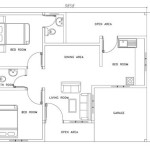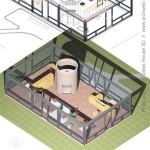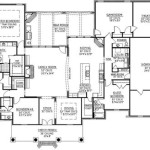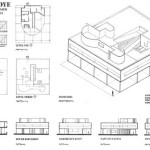Drawing of Home Plans: Essential Aspects for a Successful Project
Whether embarking on a new home construction or renovating an existing one, the blueprint of your dream dwelling lies in the intricate plans drawn by architects. These plans serve as the roadmap guiding every step of the building process, ensuring the home meets all functional and aesthetic requirements.
Understanding the Components of Home Plans
A comprehensive set of home plans consists of several essential components:
- Site Plan: Outlines the property's dimensions, setbacks, and the proposed location of the house.
- Floor Plans: Shows the layout of each floor, including room sizes, door and window placements, and built-in features.
- Elevations: Depicts the exterior appearance of the house from different sides.
- Sections: Provides vertical cross-sections of the house, showcasing the interior structure and heights of rooms.
- Details: Includes precise drawings of specific elements, such as window frames, trimwork, and cabinetry.
- Schedules: Lists the materials, fixtures, and finishes used throughout the house.
Benefits of Detailed Home Plans
Investing in professionally drawn home plans offers numerous benefits:
- Accuracy: Precise plans prevent costly mistakes during construction.
- Efficiency: Well-defined plans streamline the building process, saving time and money.
- Communication: Clear drawings facilitate seamless communication between contractors and homeowners.
- Cost Control: Detailed plans help you anticipate expenses and avoid surprises.
- Flexibility: Plans can be easily modified to accommodate changes in requirements or design preferences.
Choosing an Architect or Home Designer
The choice of an architect or home designer is crucial for the success of your project. Look for professionals with:
- Experience in residential design
- Understanding of your vision and needs
- Excellent communication skills
- A portfolio that showcases their design aesthetic
- Positive testimonials from past clients
Communicating Your Vision
Clearly communicating your design preferences to the architect is essential. Consider discussing:
- The number of bedrooms, bathrooms, and living spaces required
- Your lifestyle and entertainment needs
- Desired architectural style
- Energy efficiency and sustainability preferences
- Budget and timeline constraints
Conclusion
Drawing of home plans is an integral part of the homebuilding process. Detailed and accurate plans ensure the creation of a functional and aesthetically pleasing living space that meets all your requirements. By understanding the components of home plans, choosing an experienced designer, and effectively communicating your vision, you can transform your dream home into a reality.

Free House Design Home And Plans

House Plans How To Design Your Home Plan

Floor Plan House Sketch Stock Vector Ilration Of Building 52483697 Plans

Easy Home Building Floor Plan Cad Pro

House Plans How To Design Your Home Plan

House Plans How To Design Your Home Plan

House Plan Container Plans Building A Home

Where You Can Buy House Plans Live Home 3d

Sweet Home 3d Draw Floor Plans And Arrange Furniture Freely

Example Of House Plan Drawing Scientific Diagram








